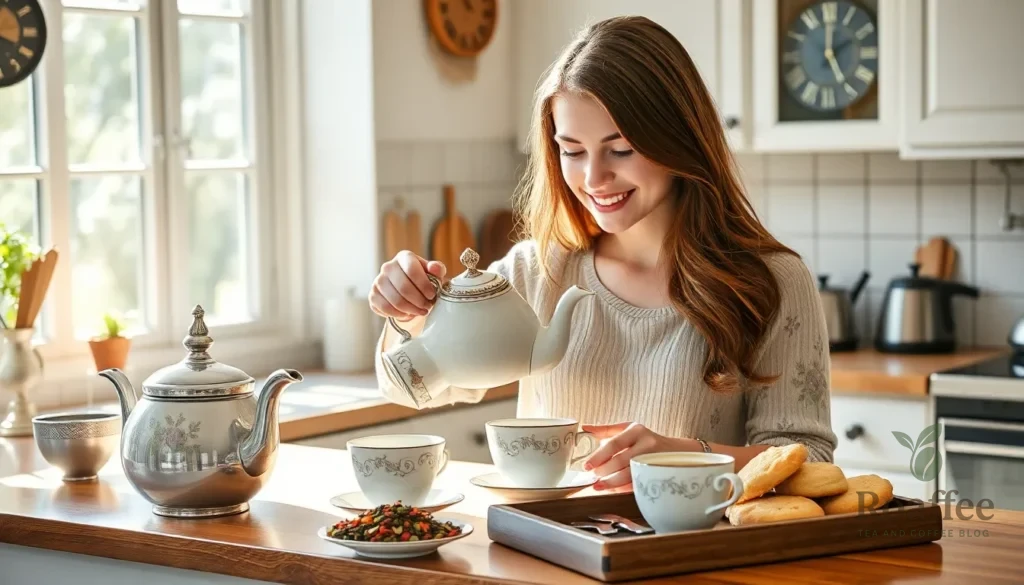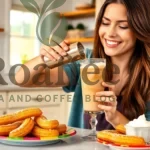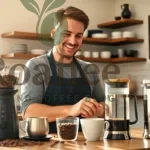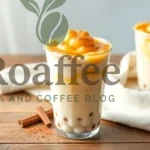There’s nothing quite like the perfect cup of British tea – that golden, aromatic brew that’s been the backbone of British culture for centuries. We’ve all heard the phrase “putting the kettle on” but mastering the art of proper British tea goes far beyond simply dunking a tea bag in hot water.
The secret lies in understanding the precise timing temperature and technique that transforms ordinary tea leaves into liquid comfort. From the rolling boil to the perfect steeping time we’ll guide you through each essential step that separates a mediocre cuppa from the sublime experience that’s made British tea famous worldwide.
Whether you’re a tea novice or someone who’s been making tea for years our foolproof method will ensure you create that perfect balance of strength flavor and warmth that defines authentic British tea. Get ready to elevate your tea game and discover why this simple ritual has captivated millions for generations.
What You’ll Need
Creating the perfect British tea begins with gathering the right tools and selecting quality ingredients. We’ll walk you through the essential equipment and tea varieties that form the foundation of authentic British tea brewing.
Tea Equipment
Essential brewing tools make all the difference in achieving that perfect cup:
- Tea kettle – Electric or stovetop kettle for heating water to the proper temperature
- Teapot – Ceramic or glass teapot that retains heat effectively
- Tea strainer – Fine mesh strainer for loose leaf teas
- Teaspoons – For measuring tea leaves and stirring
- Tea cups and saucers – Traditional porcelain or ceramic cups
- Timer – Digital or analog timer for precise steeping times
- Milk jug – Small pitcher for adding milk
- Sugar bowl – For serving sugar or sweeteners
- Tea cozy – Insulated cover to keep the teapot warm during service
Tea Varieties
- English Breakfast – Bold black tea blend perfect for morning consumption
- Earl Grey – Bergamot-scented black tea with citrus notes
- Assam – Strong malty black tea from India’s Assam region
- Ceylon – Bright and brisk black tea from Sri Lanka
- Darjeeling – Delicate muscatel flavor from India’s Darjeeling hills
- English Afternoon – Medium-bodied blend ideal for afternoon tea service
- Lady Grey – Lighter version of Earl Grey with cornflower petals
- Yorkshire Tea – Robust Northern English blend known for its strength
Ingredients
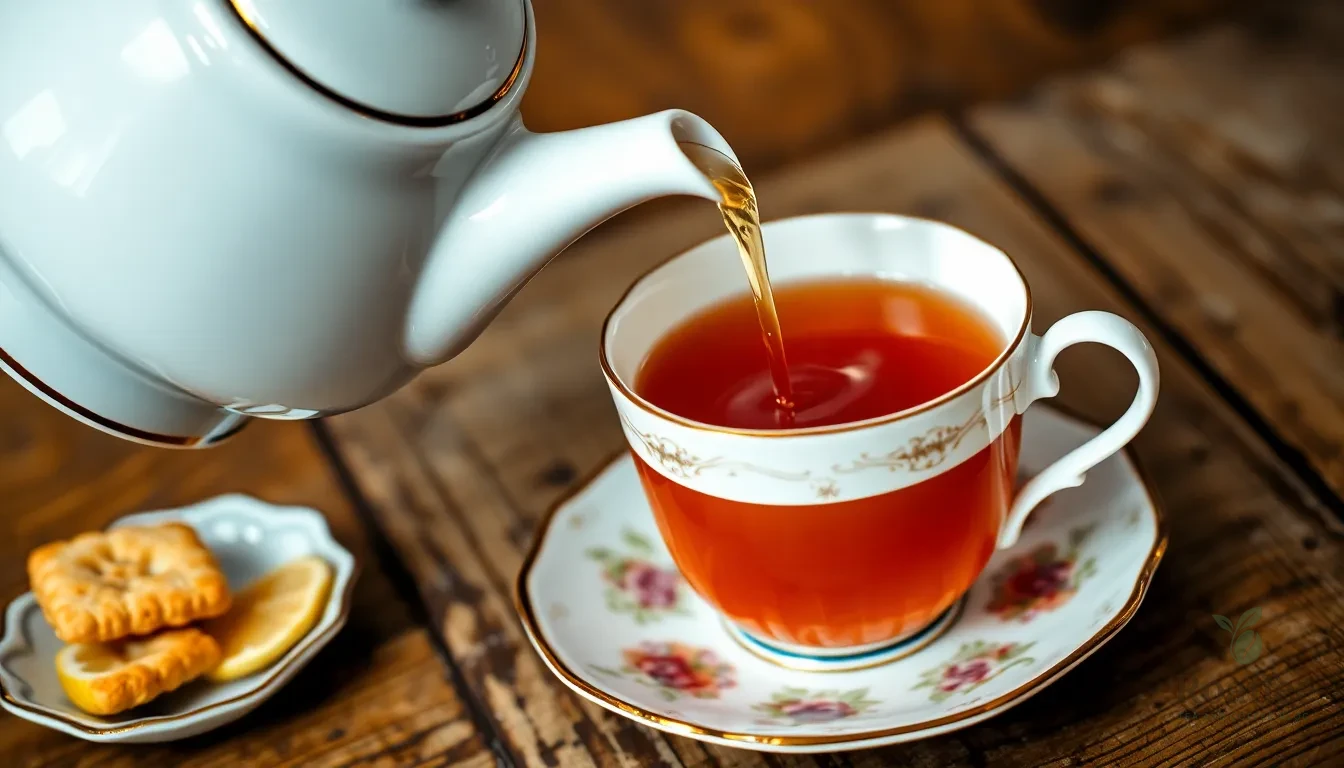
We’ve organized our British tea ingredients in order of use to ensure our brewing process flows seamlessly from start to finish. Quality ingredients form the foundation of exceptional British tea that captures the authentic flavors cherished across the United Kingdom.
Essential Tea Ingredients
- 2 teaspoons loose leaf tea (or 1 tea bag per cup) – English Breakfast or Earl Grey work perfectly
- 1 cup fresh cold water per serving
- 2-3 tablespoons whole milk (full-fat preferred for richness)
- 1-2 teaspoons granulated sugar (optional, to taste)
- 1 slice fresh lemon (optional, for Earl Grey variations)
Premium Tea Leaf Options
Our selection features traditional British tea varieties that deliver distinctive flavor profiles:
- English Breakfast – robust black tea blend perfect for morning brewing
- Earl Grey – bergamot-scented black tea with citrus notes
- Assam – full-bodied single-origin tea from India
- Ceylon – bright and brisk tea from Sri Lanka
- Darjeeling – delicate muscatel flavor from the Himalayan foothills
- Yorkshire Tea – strong Northern England blend
- English Afternoon – lighter blend ideal for afternoon service
Quality Considerations
Water quality significantly impacts our tea’s final taste. We recommend using filtered or spring water when possible since hard water can create a bitter brew. Fresh milk should be at room temperature to prevent shocking the hot tea. Sugar dissolves more easily when we add it while the tea remains piping hot.
Instructions
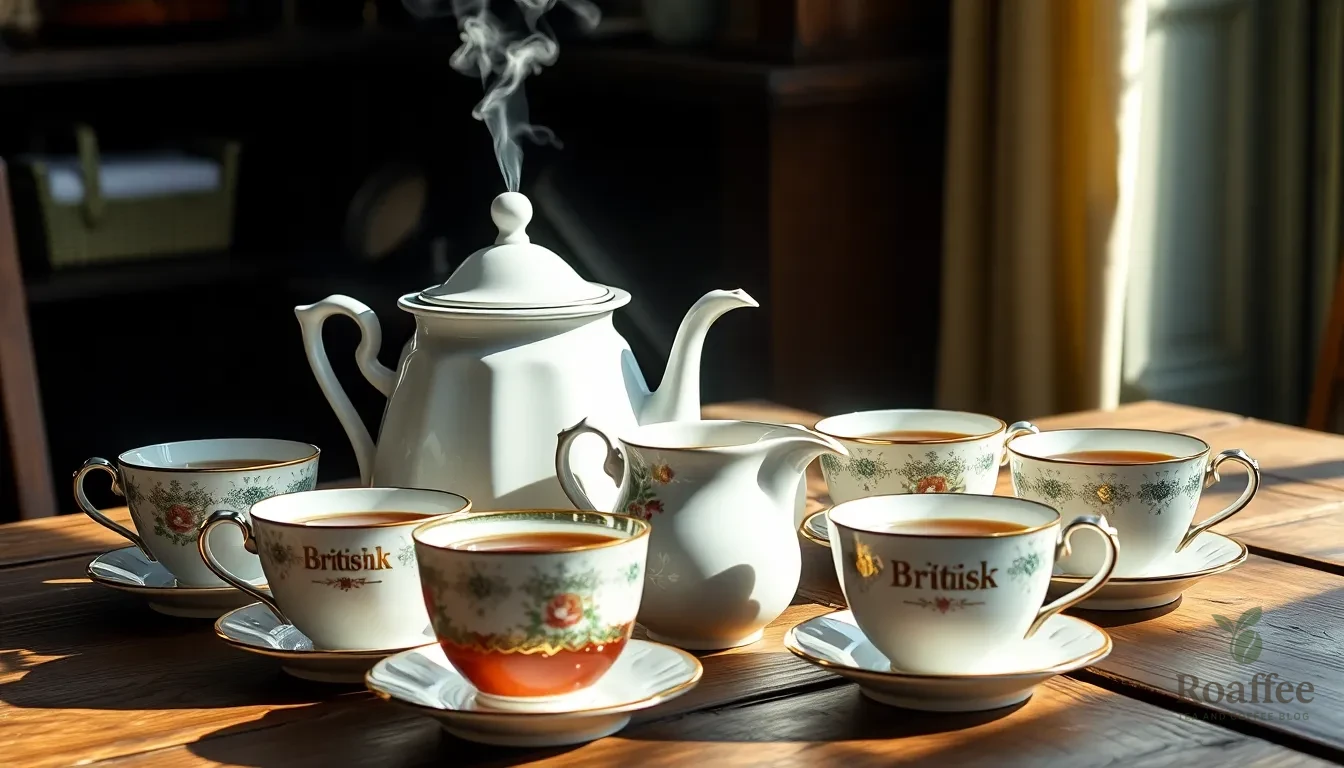
The art of brewing British tea requires precise timing and careful attention to each step. Follow these detailed instructions to create the perfect cup that balances strength and flavor with proper milk integration.
Boiling the Water
We begin by filling our kettle with fresh cold water from the tap. Quality water makes an enormous difference in the final taste of our tea. Heat the water to a rolling boil at 212°F (100°C) for black teas like English Breakfast or Earl Grey. The vigorous bubbling action ensures proper oxygenation of the water which enhances flavor extraction. Avoid reboiling previously boiled water as this removes oxygen and creates a flat taste. Listen for the kettle’s whistle or watch for steam to confirm our water has reached the proper temperature.
Warming the Teapot
Pour a small amount of the freshly boiled water into our teapot while we prepare the tea. Swirl the hot water around the interior walls to warm the ceramic or porcelain surface completely. This crucial step prevents temperature shock when we add the boiling water to steep our tea. Empty the warming water by pouring it into the sink. The preheated teapot maintains optimal steeping temperature throughout the brewing process and prevents heat loss that would weaken our tea’s strength.
Adding the Tea
Measure one teaspoon of loose leaf tea per cup plus one extra teaspoon for the pot using our traditional British ratio. Add the tea leaves directly to the warmed teapot if using loose leaf tea. Place one tea bag per cup into the teapot if using bags instead of loose leaves. Pour the boiling water over the tea leaves or bags in a steady stream to ensure even saturation. Fill the teapot completely but leave enough space at the top to prevent spillage when stirring. The hot water should cover all tea leaves or bags completely for uniform extraction.
Steeping Time
Cover the teapot with its lid and allow the tea to steep for the appropriate duration based on your tea variety. Strong black teas like English Breakfast require 3 to 5 minutes for optimal flavor development. Earl Grey needs 3 to 4 minutes to balance the bergamot oil with the black tea base. Delicate teas like Darjeeling steep for 3 to 4 minutes to preserve their subtle floral notes. Set a timer to avoid oversteeping which creates bitter tannins. Gently stir the tea once during steeping to ensure even flavor extraction throughout the pot.
Adding Milk and Sugar
Pour the milk into each teacup first before adding the brewed tea. This traditional method prevents the milk from curdling and creates a smoother texture. Use approximately one to two tablespoons of whole milk per cup depending on your preference for strength. Add granulated sugar to taste starting with one teaspoon and adjusting as needed. Stir gently with a teaspoon to combine the milk and sugar evenly. Pour the steeped tea through a strainer into each prepared cup to remove loose leaves or remove tea bags from the pot. The milk should create a beautiful caramel color when properly proportioned with the tea.
Directions for Perfect British Tea
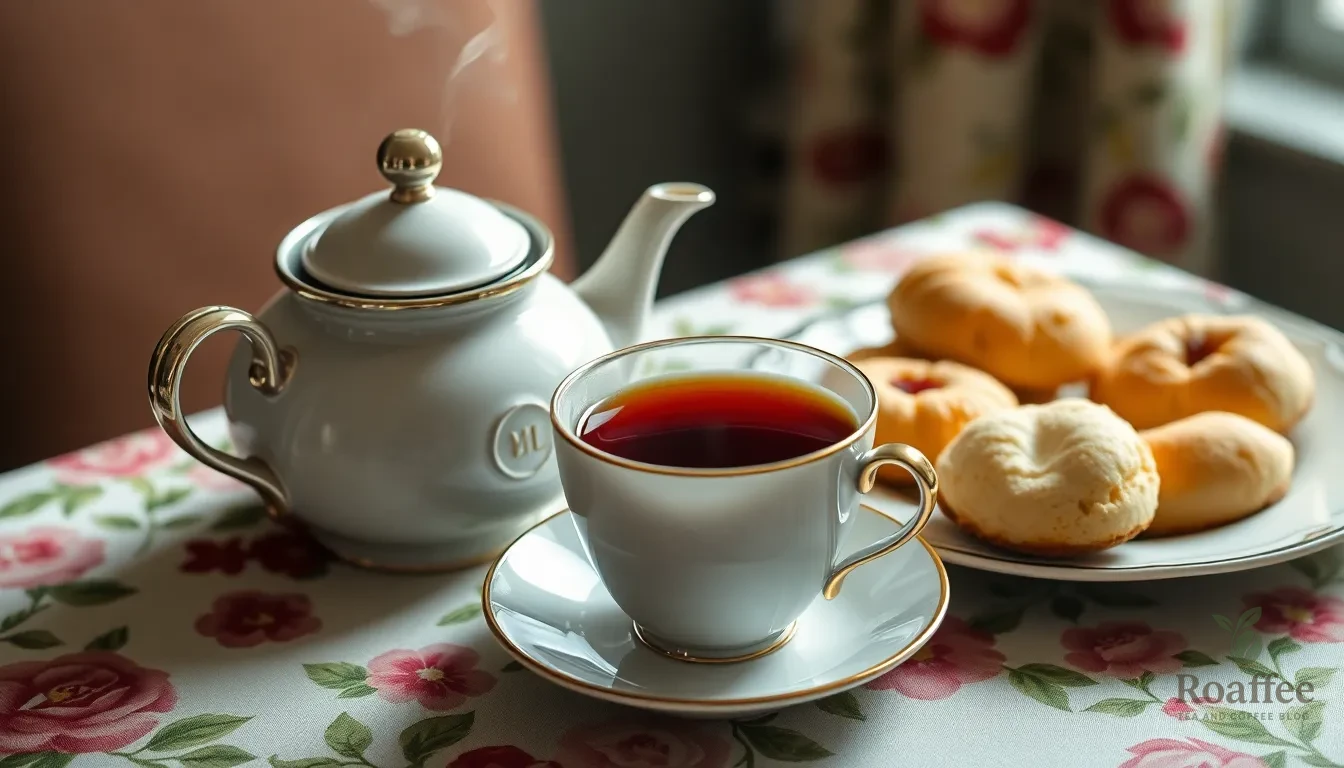
We follow precise brewing techniques to ensure our British tea achieves the perfect balance of strength and flavor. These fundamental principles transform ordinary tea making into an authentic British experience.
The Proper Tea-to-Water Ratio
We measure our tea carefully to create the ideal strength without overwhelming bitterness. For loose leaf tea, we use one teaspoon per cup plus one extra teaspoon for the pot. This traditional “one for each and one for the pot” rule ensures consistent results across different tea varieties.
Tea bags require a simpler approach. We use one tea bag per cup of water, adjusting slightly for larger mugs. Strong breakfast blends like English Breakfast or Yorkshire Tea benefit from this standard ratio, while delicate Earl Grey performs well with slightly less tea to preserve its bergamot notes.
Our water measurement stays consistent at 8 fluid ounces per serving. We account for evaporation by adding an extra ounce to the kettle when brewing multiple cups. This prevents weak tea from insufficient water during the brewing process.
Temperature Guidelines
We heat our water to the proper temperature based on the tea variety we’re brewing. Black teas require boiling water at 212°F for optimal extraction of tannins and flavors. We bring fresh cold water to a rolling boil, then pour immediately over the tea leaves.
Different tea types demand exact temperature considerations:
| Tea Type | Water Temperature | Brewing Method |
|---|---|---|
| English Breakfast | 212°F (boiling) | Pour immediately |
| Earl Grey | 212°F (boiling) | Pour immediately |
| Assam | 212°F (boiling) | Pour immediately |
| Ceylon | 212°F (boiling) | Pour immediately |
| Darjeeling | 212°F (boiling) | Pour immediately |
We never use previously boiled water or water that has been sitting in the kettle. Fresh water contains dissolved oxygen that enhances the tea’s flavor profile. Reboiled water produces flat-tasting tea that lacks the brightness characteristic of properly brewed British tea.
Our teapot warming technique prevents temperature shock when hot water meets cold ceramic. We rinse the teapot with hot water from the kettle, swirl it around, then discard before adding tea leaves. This maintains optimal brewing temperature throughout the steeping process.
Timing Your Brew
We time our brewing precisely to extract maximum flavor without bitterness. Most British black teas reach optimal strength between 3 to 5 minutes of steeping. We start timing from the moment hot water touches the tea leaves.
Exact timing guidelines ensure perfect extraction:
| Tea Variety | Steeping Time | Notes |
|---|---|---|
| English Breakfast | 3-5 minutes | Strong, robust flavor |
| Earl Grey | 3-4 minutes | Preserve bergamot balance |
| Assam | 3-5 minutes | Full-bodied strength |
| Ceylon | 3-4 minutes | Bright, citrusy notes |
| Darjeeling | 4-5 minutes | Complex, delicate flavor |
| Yorkshire Tea | 4-5 minutes | Traditional strength |
We resist the urge to squeeze tea bags or press loose leaves during brewing. This releases excess tannins that create bitter, astringent flavors. Instead, we allow gentle steeping to extract the tea’s natural characteristics.
Our timer becomes essential during this phase. We set it as soon as water meets tea and remove leaves or bags immediately when time expires. Oversteeping produces harsh, bitter tea that milk and sugar cannot remedy.
We gently stir the tea once during steeping to ensure even extraction. This single stir at the 2-minute mark distributes the tea evenly throughout the pot without agitating the leaves excessively.
Traditional British Tea Service
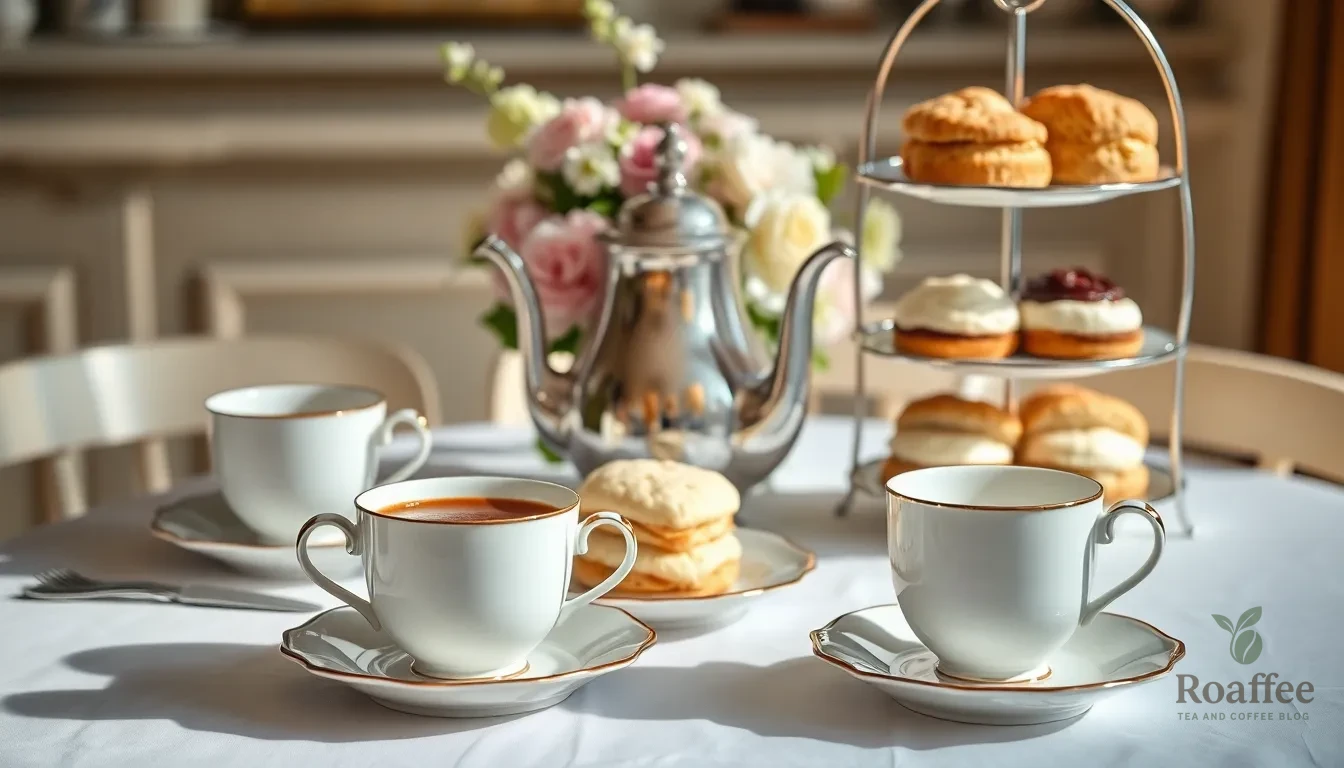
A proper British tea service transforms the simple act of drinking tea into an elegant ritual that honors centuries of tradition. We elevate our perfectly brewed tea by following established serving customs that enhance both the experience and the flavor.
Serving Etiquette
We begin our tea service by arranging cups and saucers at each place setting before pouring the tea. The host traditionally asks guests “Milk first or tea first?” to respect individual preferences. We pour the tea from a height of about six inches to create the signature gentle cascade that aerates the liquid.
When serving milk we add it slowly while stirring gently with a teaspoon. We never leave the spoon in the cup but instead place it on the saucer beside the cup. Sugar gets added after the milk and we stir in a back-and-forth motion rather than circular to prevent clinking against the cup.
We hold the teacup by its handle with our thumb and forefinger while supporting the bottom with our middle finger. The saucer stays on the table unless we’re standing or moving about the room. We sip quietly from the cup without slurping and replace it gently on the saucer after each sip.
Accompaniments
We serve traditional British tea with carefully selected accompaniments that complement the tea’s flavor profile. Classic biscuits like digestives shortbread or rich tea biscuits provide the perfect balance of sweetness and texture. We arrange these on a separate plate or tiered stand for easy access.
Fresh scones with clotted cream and jam represent the cornerstone of afternoon tea service. We split the scones horizontally and spread clotted cream first followed by jam. Strawberry jam remains the traditional choice though raspberry or apricot work beautifully as well.
Small finger sandwiches cut into triangles or rectangles add substance to our tea service. We prepare cucumber sandwiches with thinly sliced cucumber on buttered white bread. Egg salad or smoked salmon sandwiches offer additional variety while maintaining the refined character of British tea service.
We present everything on fine china or porcelain to honor the tradition and enhance the overall experience. Fresh flowers or a simple centerpiece complete our table setting and create the perfect atmosphere for enjoying our carefully prepared British tea.
Make-Ahead Tips
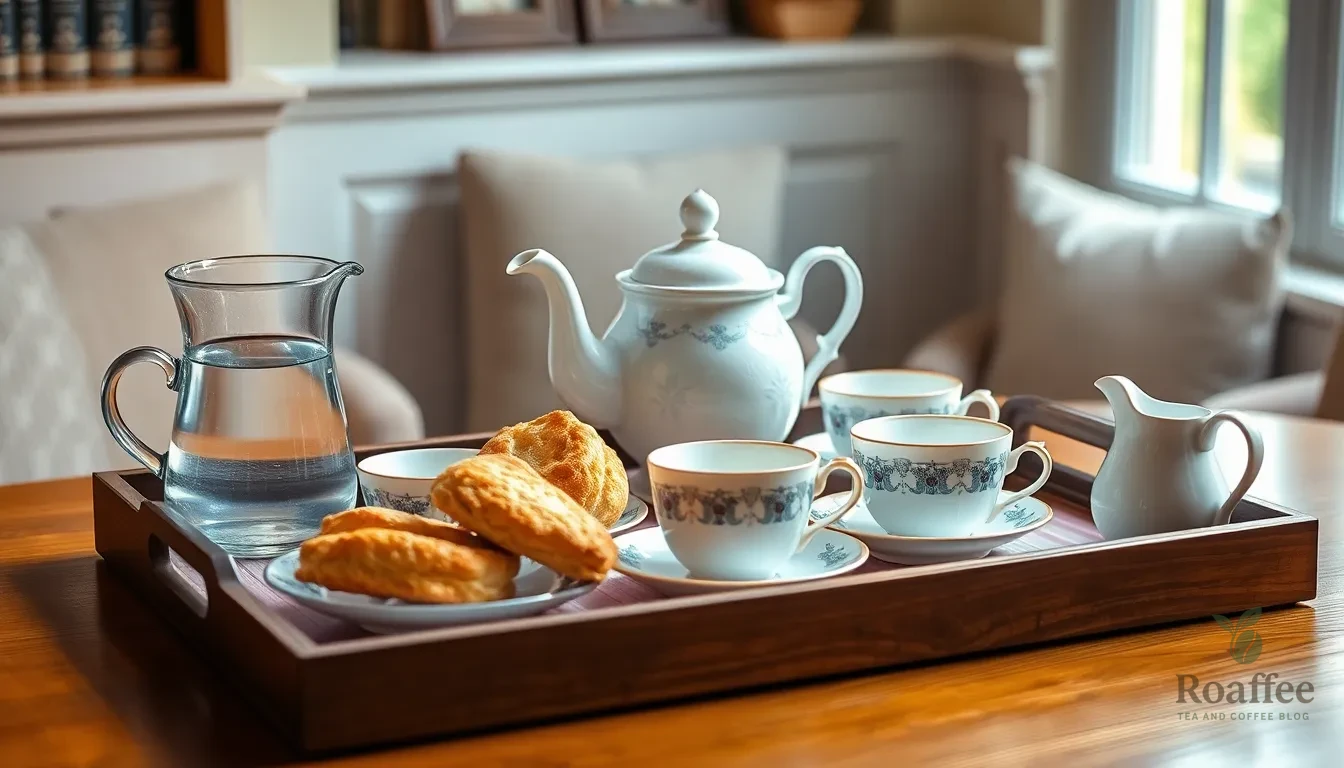
We can streamline our British tea service by preparing several components in advance without compromising the authentic brewing process. Our tea service becomes more efficient when we organize key elements ahead of time.
Tea Blend Preparation
We recommend measuring loose leaf tea portions into small containers or sachets the night before our tea service. Each portion should contain the exact amount needed for one pot to ensure consistent strength. Our measurements remain accurate when we store these pre-portioned teas in airtight containers away from light and moisture.
Water Quality Enhancement
We can filter our water several hours before brewing and store it in a clean pitcher at room temperature. Fresh cold water produces the best tea flavor so we avoid using water that has been sitting overnight. Our tea tastes significantly better when we use water that has been filtered and allowed to reach optimal temperature naturally.
Teapot and Cup Preparation
We can arrange our complete tea service on a tray the evening before including cups saucers spoons and serving pieces. Our fine china should be dust free and positioned exactly where we plan to serve. We recommend checking each piece for chips or cracks to ensure our presentation remains elegant.
Accompaniment Organization
We can prepare our biscuits scones and finger sandwiches up to 24 hours in advance when stored properly. Our scones stay fresh in airtight containers while sandwiches require refrigeration with damp paper towels to prevent drying. We should slice lemons and arrange them on a covered plate to maintain freshness for Earl Grey service.
Milk and Sugar Station Setup
We can fill our milk jug and sugar bowl the night before and cover them to maintain freshness. Our whole milk should be removed from refrigeration 30 minutes before serving to reach optimal temperature. We recommend using a small pitcher for milk to control portions and prevent waste during multiple servings.
Timeline Management
We save considerable time by creating a brewing schedule that accounts for different tea varieties and their exact steeping requirements. Our guests receive perfectly timed tea when we coordinate the boiling water timing with teapot warming and tea addition. We can write down steeping times for each tea variety to reference during service without guesswork.
Storage and Freshness
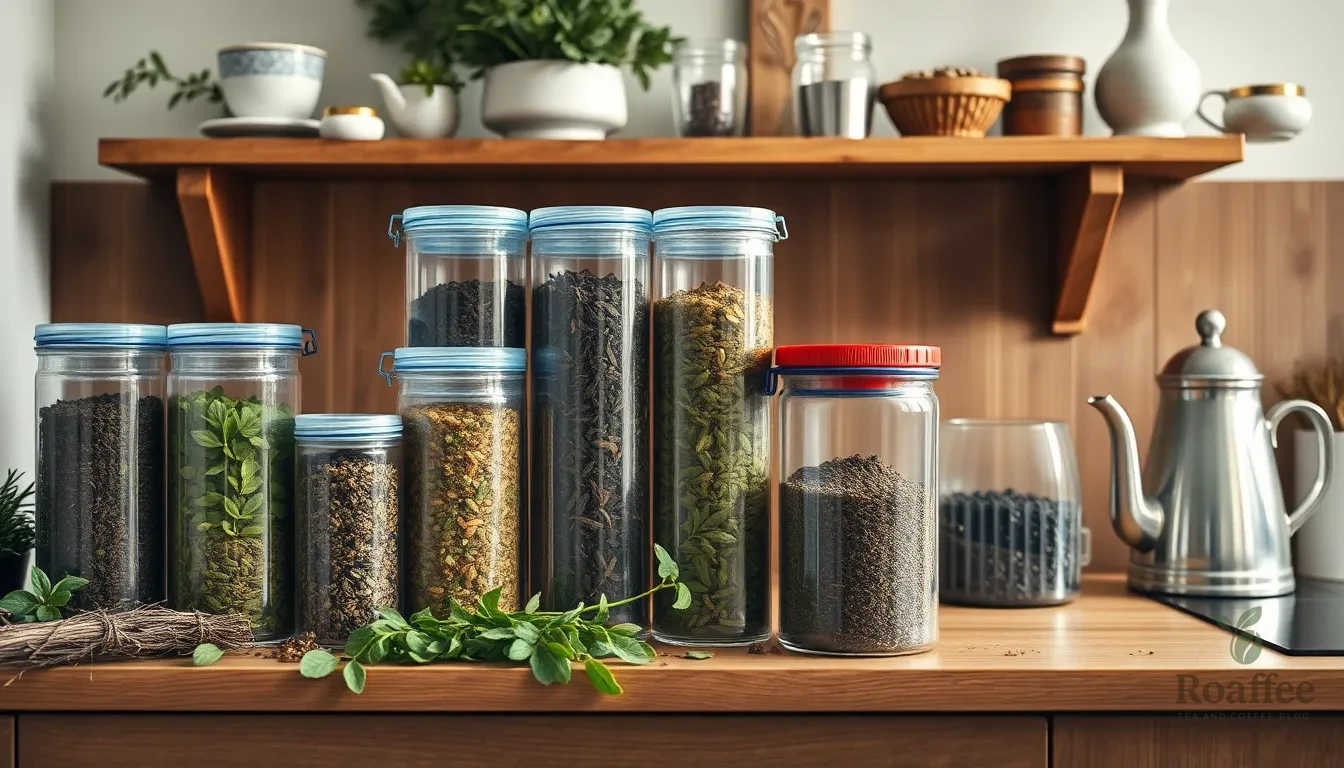
Proper storage extends the life of our tea leaves and preserves the delicate flavors that make British tea exceptional. We store loose leaf tea in airtight containers away from light, heat, and moisture to maintain optimal freshness. Dark pantry spaces or dedicated tea cabinets work best for preserving the essential oils that give each variety its distinctive character.
Tea leaves absorb odors readily, so we keep them separate from strong-smelling spices and coffee. Glass jars with tight-fitting lids or tin containers with secure seals protect our investment in quality tea. We avoid storing tea in the refrigerator as temperature fluctuations create condensation that damages the leaves.
Fresh water makes a important difference in tea quality, so we replace stored water every few days. We keep filtered water in clean containers and avoid using water that has been sitting in the kettle overnight. Stale water produces flat-tasting tea that lacks the bright notes we seek in properly brewed British tea.
| Tea Type | Storage Duration | Optimal Conditions |
|---|---|---|
| Black Tea | 2-3 years | Airtight container, room temperature |
| Earl Grey | 2-3 years | Away from light, sealed container |
| Green Tea | 1-2 years | Cool, dry place, minimal air exposure |
| Tea Bags | 18-24 months | Original packaging until opened |
We check our tea supply regularly for signs of deterioration. Fresh tea leaves should feel dry and crisp between our fingers, never damp or musty. The aroma should be vibrant and characteristic of the exact variety. Faded color in the dry leaves often indicates loss of flavor compounds.
Milk requires careful attention to freshness since it directly impacts the final cup. We use whole milk within its expiration date and store it at proper refrigerator temperatures. Room temperature milk should only sit out for the duration of our tea service to prevent spoilage.
We rotate our tea inventory using the first-in-first-out method to ensure we always brew with the freshest leaves available. Dating containers when we open them helps us track freshness and maintain the high standards that British tea deserves.
Conclusion
Mastering the art of British tea brewing transforms an everyday ritual into something truly special. We’ve covered everything from selecting quality ingredients to perfecting timing and temperature – each element working together to create that perfect cup.
The beauty of British tea lies in its simplicity paired with attention to detail. Whether you’re serving guests or enjoying a quiet moment alone the techniques we’ve shared will help you create an authentic experience that honors this cherished tradition.
Remember that practice makes perfect. Don’t be discouraged if your first attempts don’t match your expectations. With time and patience you’ll develop the instincts needed to brew tea that rivals any British tearoom.
Now it’s time to put the kettle on and start your own journey into the wonderful industry of proper British tea making.
Frequently Asked Questions
What equipment do I need to brew authentic British tea?
Essential equipment includes a tea kettle, teapot, tea strainer, teaspoons, tea cups with saucers, a timer, milk jug, sugar bowl, and optionally a tea cozy. Using proper equipment ensures temperature control and enhances the traditional brewing experience. Fine china or porcelain cups are preferred for serving authentic British tea.
What are the best tea varieties for British tea?
Popular British tea varieties include English Breakfast, Earl Grey, Assam, Ceylon, Darjeeling, English Afternoon, Lady Grey, and Yorkshire Tea. Each offers distinctive flavor profiles, from robust morning blends to delicate afternoon teas. English Breakfast and Earl Grey remain the most traditional choices for authentic British tea service.
What’s the proper tea-to-water ratio for brewing?
Use one teaspoon of loose leaf tea or one tea bag per cup of water. For stronger tea, add more tea rather than steeping longer to avoid bitterness. The standard ratio ensures balanced flavor without overwhelming strength, allowing the tea’s natural characteristics to shine through properly.
How long should I steep different types of tea?
Black teas like English Breakfast and Assam should steep for 3-5 minutes. Earl Grey needs 3-4 minutes, while Darjeeling requires 4-5 minutes. Ceylon tea steeps for 3-4 minutes. Longer steeping times can result in bitter, astringent flavors that overpower the tea’s delicate notes.
Should I add milk first or tea first?
The traditional debate has no definitive answer, but adding tea first allows better control over the milk quantity and temperature. Pour hot tea into the cup, then add milk gradually until achieving the desired color and taste. This method prevents the milk from scalding.
How should I store tea leaves to maintain freshness?
Store loose leaf tea in airtight containers away from light, heat, and moisture. Keep tea separate from strong odors that can affect flavor. Most black teas maintain quality for 2-3 years when stored properly. Rotate inventory regularly and use fresh, filtered water for optimal brewing results.
What accompaniments pair well with British tea?
Traditional accompaniments include biscuits, scones with clotted cream and jam, and small finger sandwiches. These classics complement tea’s flavors without overwhelming them. Fresh flowers or simple centerpieces enhance the tea service atmosphere, creating an elegant and inviting experience for guests.
Can I prepare components for tea service in advance?
Yes, measure loose leaf tea portions the night before and filter water hours in advance. Prepare biscuits and scones ahead of time, arrange the tea service on a tray, and set up milk and sugar stations. Create a brewing schedule to manage timing effectively while maintaining authentic flavors.

